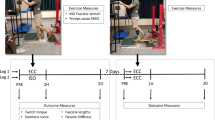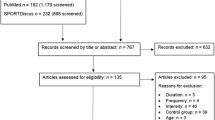Abstract
The objective of this review is to evaluate the measurement tools currently used in the study of eccentric contraction-induced muscle injury, with emphasis on their usefulness for quantifying the magnitude and duration of the injury and as indicators of muscle functional deficits. In studies in humans, it was concluded that measurements of maximal voluntary contraction torque and range of motion provide the best methods for quantifying muscle injury. Similarly, in animal studies, the in vitro measurement of electrically elicited force under isometric conditions was considered to be the best of the measurement tools currently in use.
For future studies, more effort should be put into measuring other contractile parameters (e.g. force/torque-velocity and force/torque-length relationships, maximal shortening velocity and fatigue susceptibility) that may reflect injury-induced functional impairments. The use of histology, ratings of soreness and the measurement of blood or bath levels of myofibre proteins should be discouraged for purposes of quantifying muscle injury and/or functional impairment.
Similar content being viewed by others
Author information
Authors and Affiliations
Corresponding author
Rights and permissions
About this article
Cite this article
Warren, G.L., Lowe, D.A. & Armstrong, R.B. Measurement Tools Used in the Study of Eccentric Contraction-Induced Injury. Sports Med 27, 43–59 (1999). https://doi.org/10.2165/00007256-199927010-00004
Published:
Issue Date:
DOI: https://doi.org/10.2165/00007256-199927010-00004




